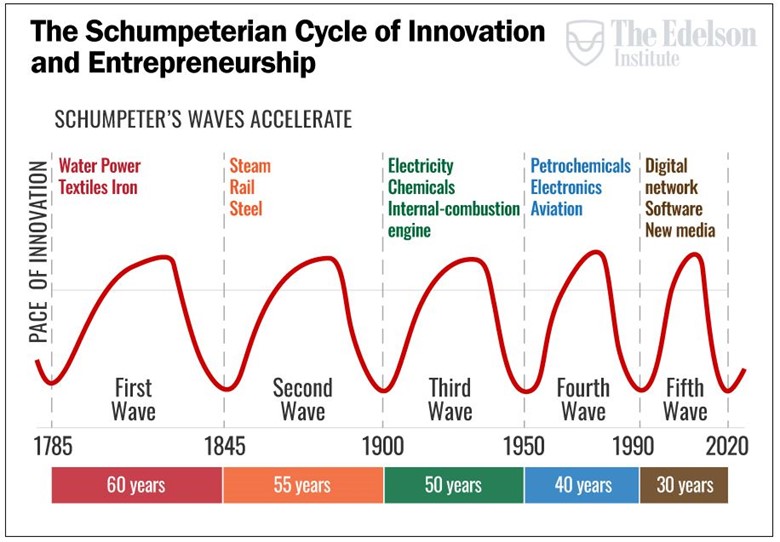Enabling Innovation

The EIRA project was awarded £4.7 million funding from Research England’s Connecting Capability Fund in April 2018 to increase business productivity and innovation in the East of England. Since our official launch, we have funded over 80 exciting projects – including student microfinance, Proof of Concept grants to commercialise research and R&D grants to enable knowledge exchange between academics and businesses. We’ve also launched our Enabling Recovery fund to support businesses in response to the Covid-19 pandemic.
With the government recently announcing a £1.25 billion support package for innovative businesses hit by the pandemic, and a further £10 million package announced in the budget to support entrepreneurs and start-ups, it’s clear that ‘innovation’ and ‘creativity’ are buzzwords we are likely to be hearing more and more frequently.
But what is innovation, and why is it important for your business?
What is Innovation?
To understand what innovation is, we first need to define what we mean by the terms invention and creativity, because all three concepts depend upon and relate to each other.
Creativity is what is needed to bring new ideas, products and services into the world.
“Creativity is generating new ideas and concepts, or making connections between ideas where none previously existed.” (Rigie and Harmeyer, 2013)
From creative ideas, inventions are born. At its most basic, an invention is a product, service or technology that has not been seen before. What higher education institutions and businesses mean when they talk about innovation is the ability to capitalise on the invention, turning it into a commercial success.
As Joseph Schumpeter outlined in his work ‘The Theory of Economic Development’ (Schumpeter, 1934), all innovations have a life cycle. As we move through time, the years in between groundbreaking innovations that change and shape the world decrease, as you can see in the Cycle of Innovation and Entrepreneurship below. Schumpeter went on to describe a concept of ‘creative destruction’, whereby an innovation has to make a previous one obsolete in order to survive. Quite literally, out with the old, in with the new.
So how can you be sure that the innovation you are looking to implement is on the right side of history? A good place to start is with Gartner’s Hype Cycle. Each year, Gartner, a leading research and advisory company, produce a number of reports looking at digital and emerging technologies. Whilst some of these trends might not be suitable for your business right now, it is a good idea to familiarise yourself with what may become commonplace in the near future.
When we talk about innovation, it is often traditionally assumed we’re discussing a new product or service, or an upgrade / improvement to an existing product or service. It can absolutely mean these things, but running an innovative business doesn’t mean you need a team of R&D specialists cooking up new inventions. In fact, as a business owner, you will already have the most precious resources to take you on the road to innovation: your customers, competitors, stakeholders, suppliers and staff.
By fostering a creative climate within your business, encouraging entrepreneurial thinking amongst your team and maintaining positive relationships with your stakeholders – especially your customers, suppliers and competitors, you’ll be primed and ready to go with tackling your next innovation project.
How can I make my business more innovative?
Whilst there are many ways you can make your business more innovative, the quickest and first step should be to make sure your staff are motivated and encouraged to share their ideas. Although approaches that Google and Apple have adopted are fairly transformative (sleep pods, arcade games etc), actively encouraging staff to spend part of their working days thinking creatively, your approach needn’t be quite so drastic. More regular team meetings to discuss ideas, or even the simple suggestion box could be used to ensure your staff feel invested in your business and excited enough to share their ideas.
An important next step (and this should be relatively easy when considering the digital age) is to engage your customers in the process. A truly entrepreneurial organisation is market-orientated and customer-driven. What does that mean? It means taking the time to research what is happening in your market, what your competitors are up to, where there may be gaps and upcoming challenges that may affect your business. It means asking your customers for feedback and taking the time to respond to them on a personal level.
If customer engagement is already hot on your agenda, then the chances are you may already be making small, incremental and innovative changes to your business that continually seek to improve and add value to your customers’ experiences. If not, then this should be what you strive for. Competitions are a good way of engaging your customers and gaining an insight into what their hidden needs are, helping you move further down the road to innovation.
Another important step is to look for people that can help your business. Being a business owner can frankly be a lonely and worrying time, particularly in the wake of the pandemic with mounting bills and pressure to ‘bounce back’. However, help is out there – if you are prepared to seek it out. If you are reading this article, then you may already be familiar with EIRA and the work we do to support business innovation in the East of England. We have funds available to connect your business with academic experts across our network of 7 university partners. With a small amount of match-funding, this expertise can help you:
– scope a project for innovation
– gain insight into a market you’re interested in diversifying into
– research systems for data management that can improve your processes
– develop prototypes for new products
…and much more.
Universities are working harder than ever to understand and improve upon their offer to businesses. With a wealth of expert talent at their fingertips and amazing facilities and equipment, working with universities should be a no-brainer. Many of EIRA’s university partners offer space for your growing business, have a look at the business incubation units and support available at: Essex, Kent, UEA and Suffolk.
Though many universities can support business growth through schemes such as internships, Knowledge Transfer Partnerships (KTPs) and funding, there is other support available through your local growth hub, catapults and chambers of commerce, all who are working tirelessly to support business productivity right now.
If you’re not sure where to start, the Knowledge Transfer Network (KTN) have developed the Innovation Canvas, a toolkit to help you spot gaps in your capacity to innovate and analyse your business challenges. EIRA’s network of Knowledge Exchange professionals are trained in using this tool, and can arrange an exploratory session with you to work through the toolkit together. Contact us to arrange a meeting and we can get you started.
Where to next?
There are lots of places you can go for more information on innovation. The Harvard Business Review is a good place for business insider tips. You can find your Local Enterprise Partnership and contact your relevant growth hub, many of which are offering an unprecedented level of support post-pandemic.
Of course, universities are at the cutting edge of innovation, offering a wealth of expertise, specialist facilities and funding. If you’re interesting in finding out more about the many ways universities can support your innovation for growth, EIRA can point you in the right direction. Give us a call on 01206 876015 or contact us through our website to begin your innovation journey!
References
RIGIE, M. and HARMEYER, K. (2013) Smartstorming®: The game changing process for generating bigger, better ideas. Indianapolis, Dog Ear Publishing.
SAKPAL, MANASI. (2019) ‘Five Digital Technology Trends for 2020’. GARTNER. 21st November. <Available at: https://www.gartner.com/smarterwithgartner/5-digital-technology-trends-for-2020/> (Accessed 11th June 2020)
SCHUMPETER, J.A. (1934). ‘The Theory of Economic Development’. Cambridge, Mass. Harvard University Press
WEALTHWAVE (2017) ‘The Best-performing Metal You’ve Never Heard Of’. 20th September 2017. [online]. WAVEWEALTH. < https://www.edelsoninstitute.com/commodities/cobalt-best-performing-metal-youve-never-heard-of/> (Accessed 11th June 2020)
Photo credit: Photo by Aaron Burden on Unsplash

